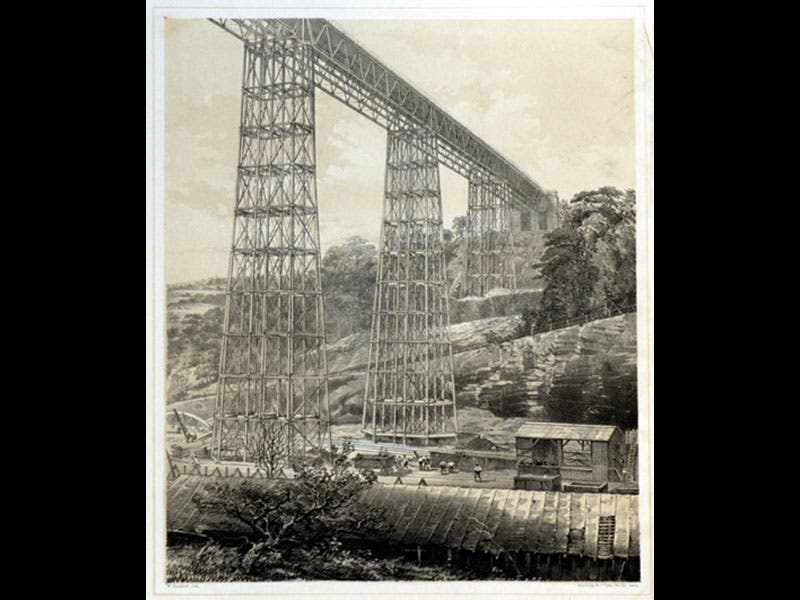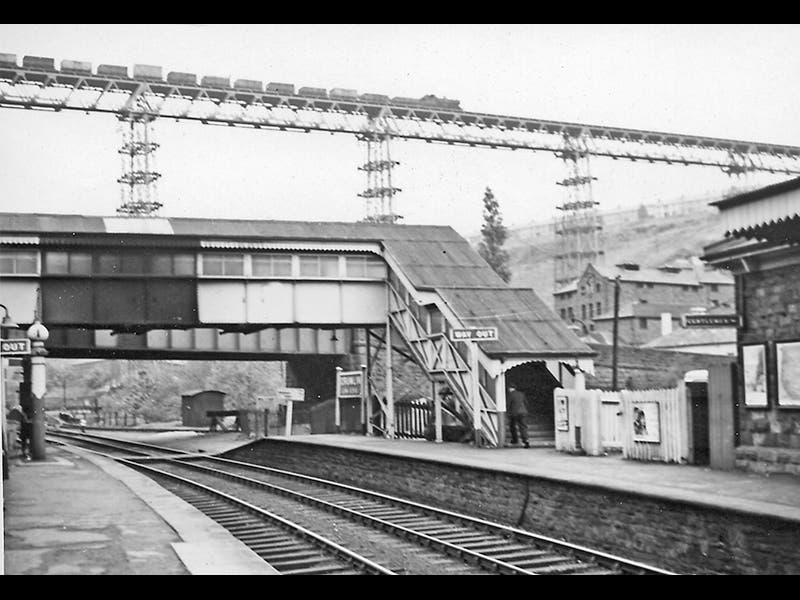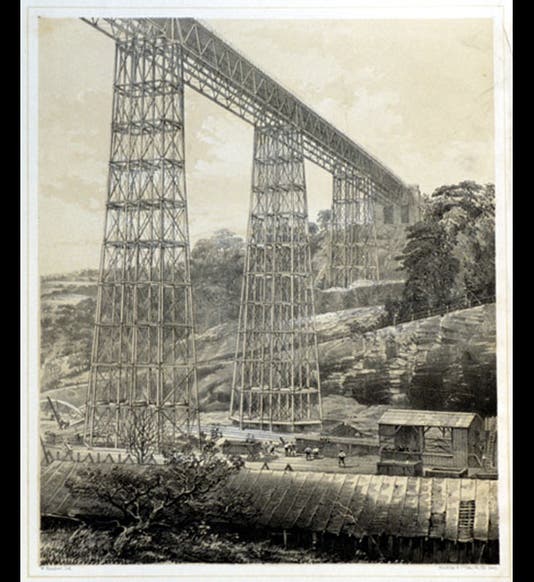Scientist of the Day - Thomas W. Kennard



The Crumlin Viaduct, a railway bridge in southern Wales, opened June 1, 1857. This viaduct was a true engineering marvel--the longest and highest viaduct in the world for over a century. Almost 1700 feet long and over 200 feet high, it crossed the valley of the Ebbw River and allowed coal to be conveyed from the mines on the other side of the valley. A viaduct differs from a bridge in that each of the iron piers is separate from the others, unconnected by trusses except for the one at the top that carries the railway bed. Kennard was both designer and builder, and he utilized the newly invented Warren triangular girders, which essentially make each support beam a network of triangles, so that they are immune to stresses of torque or twist and only have to deal with compression or tension. It just so happens that William Humber was completing a book on iron railway bridges in 1857, and he used the Crumlin viaduct for his frontispiece (first image above). We included this book and this image in our 2002 exhibition, Centuries of Civil Engineering. The other images above include a lithograph of 1867, a slightly later photograph showing the viaduct passing over Crumlin, and a shot of a railway engine crossing the span. The line was eventually adapted for passenger use and was in regular service until the viaduct was closed in 1964, supposedly because it was structurally unsound (although the locals doubt this). As it was being demolished in 1966-67, Gregory Peck and Sophia Loren, shooting scenes for the film Arabesque, scampered along the viaduct, avoiding gunfire from a sniper in a helicopter. If you own a DVD of this film, take a look, beginning about the 1:29:00 mark (near the very end). Or you can see it here on Youtube. Dr. William B. Ashworth, Jr., Consultant for the History of Science, Linda Hall Library and Associate Professor, Department of History, University of Missouri-Kansas City. Comments or corrections are welcome; please direct to ashworthw@umkc.edu.






